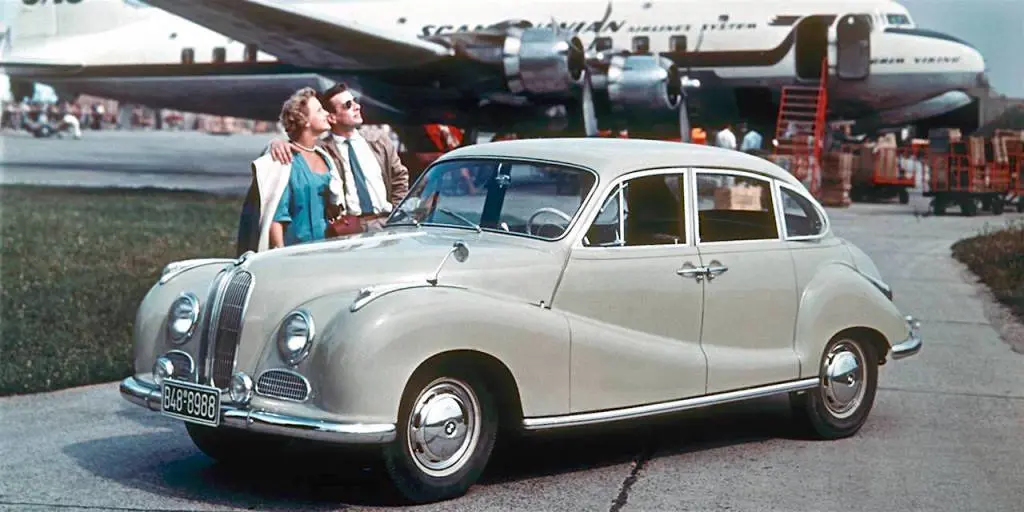SEVENTY YEARS OF THE BMW BAROQUE ANGEL
23 December 2021
When the 501 debuted at the 1951 Frankfurt Motor Show, it was one of the stars of the BMW stand. This was the company’s first new post-war model and an elegant sports saloon that cost around four times the average German wage. But, above all, there were those distinctive lines that resulted in the nickname ‘Baroque Angel’.

Four years earlier, BMW decided to re-start car production at their Munich plant. Management considered several options, from reviving the pre-war 327 to building Fords and Simcas under licence. They opted for the 501, partially due to the company’s expertise in making prestige models and also because an expensive saloon required less production investment than a smaller mass-market car,
The 501 used the 1,971 six-cylinder engine from the pre-war 326 combined with a four-speed all-synchromesh gearbox. Well-heeled motorists praised its ride and handling, while a BMW dealer could point out that at 15,000DM, it was cheaper than the rival Mercedes-Benz 300 ‘Adenauer’. However, sales were initially slow, with just 49 examples leaving the factory in 1952 and 1,645 in the following year.
Output doubled in 1954, and in that same year, the 2.6-litre 502 became Germany’s first post-war V8 engine car. This was a car for the (very) few as its 17,800DM price tag was equivalent to four VW Beetles. By 1955, BMW offered the 501/3, with an improved six-cylinder engine, the 501 V8, with a less powerful version of the 2.6-litre unit and the 502. The flagship was the newly launched 3,168 cc ‘3.2’.
Motor Sport found the 501 V8 as “a first-class example of a modern family saloon, in which a great deal of thought had been given to the wishes of the driver who enjoys motoring as well as those who merely want a travelling lounge”. Alas, very few British motorists were likely to encounter the Baroque. BMW’s UK concessionaire was Frazer Nash, but only a handful of cars crossed the Channel.
1959 saw the Baroque become available with power steering, and in 1960 it became the first German car with front disc brakes as standard. ”. 1961 saw the debut of the 1500 ‘Neue Klasse’, and by now the ‘2600/ 3200’ looked highly dated. Yet the 3.2 litre ‘S’ was one of the country’s fastest saloons, which explained their popularity with Germany’s police forces. Indeed, in 1961 the Baroque became a TV star in the crime series Funkstreife Isar 12.
Production of the last 2600 and 3200 ceased in 1963. The 501 family never achieved its predicted sales figures, with BMW selling only a sixth of the projected output. A further problem was the bodywork was also extremely expensive to construct. By 1956 the company was said to be subsidising each example by 4,000 or 5,000DM. Yet, in its way, the Baroque was a great car – and one that anticipated future generations of BMW sports saloons.
